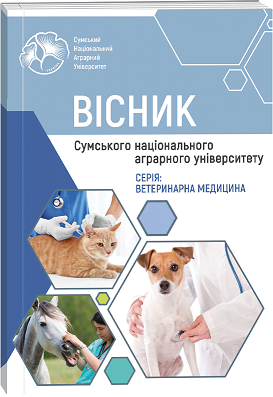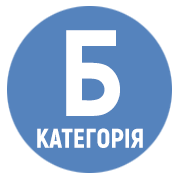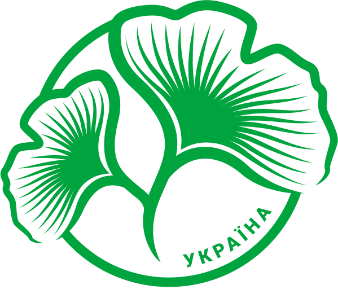ВИЗНАЧЕННЯ ПАРАМЕТРІВ ТОКСИЧНОСТІ ВЕТЕРИНАРНОГО ЗАСОБУ «АСПІР-35»
Abstract
The impact of heat stress is a serious problem that causes economic losses for poultry farming. Heat stress has a detrimental effect on physiological responses, such as immunity, oxidative stress, intestinal and muscle functions. Heat stress affects feed intake, antioxidant system, mitochondrial function and heat shock protein expression; disrupts the free radical homeostasis of the body and reorganizes the use of protein, fat and energy; this subsequently affects the productivity, reproduction and health of animals. The aim of the work is to conduct a toxicological assessment of the veterinary drug "Aspire-35" produced by the NPF "Brovapharma" (Ukraine). The following methods were used in the work: statistical, physiological state studies, pathoanatomical, histological, hematological. The article presents the results of studying the toxicity of the veterinary drug "Aspire-35" on laboratory animals. The drug "Aspire-35" at a single oral administration in doses of 1250, 2500 and 5000 mg/kg of body weight did not cause death of experimental rats and mice. Based on the conducted studies, it can be concluded that the maximum dose of the drug "Aspire-35", which does not cause death of experimental rats and mice at a single oral administration (LD0) is greater than the dose of 5000 mg/kg of body weight. On this basis, the drug "Aspire-35" can be attributed to the 4th hazard class according to the International Standard GOST 12.1.007-76, or to category 5 according to the International Global Harmonized System (GHS), since the LD50 of the drug "Aspire-35" at oral administration will exceed 5000 mg/kg of body weight. The drug "Aspire-35" at a dose of 0.5 ml/kg of body weight (twenty-five times the maximum therapeutic dose prescribed for the treatment of young cattle) when administered subcutaneously for 18 days did not cause any negative or harmful effects on the body of experimental rats, did not affect their growth and development, did not cause changes in the relative mass of internal organs and did not lead to changes in hematological indicators in experimental animals. When the animals were necropsied, no visible pathological changes were observed in the internal organs and tissues of rats. Also, no significant changes were recorded in the relative mass coefficients of the internal organs of rats to the body weight of rats at the end of the study. Further studies will be the next stage of pre-registration trials aimed at studying the toxicity of the drug "Aspire-35" upon repeated administration to birds (subacute toxicity upon oral administration), which is a mandatory material in the section "Safety and Residue Studies" of the dossier for this medicinal product.
References
2. Bednar-Friedl B. et al. Europe. In: Climate Change (2022) : Impacts, Adaptation and Vulnerability. Cambridge University Press, 2022. P. 1817–1927. DOI: https://doi.org/10.1017/9781009325844.015 .
3. Bilal, R. M., Hassan, F. U., Farag, M. R., Nasir, T. A., Ragni, M., Mahgoub, H. A., & Alagawany, M. (2021). Thermal stress and high stocking densities in poultry farms: Potential effects and mitigation strategies. Journal of Thermal Biology, 99, 102944.
4. Borovska H., Khokhlov V. (2023). Climate data for Odesa, Ukraine in 2021–2050 based on EURO-CORDEX simulations. Geoscience Data Journal. 2023. Advance online publication. DOI: https://doi.org/10.1002/gdj3.197
5. Goel, A. (2021). Heat stress management in poultry. Journal of Animal Physiology and Animal Nutrition, 105(6), 1136-1145.
6. Heat stress in poultry is a growing practical and economic problem. Poultry breeding. u.a. 2019. No. 7-8 (19-20).
7. IPCC. Climate Change 2022: Impacts, Adaptation and Vulnerability. Cambridge University Press, 2022. 3056 p. DOI: https://doi.org/10.1017/9781009325844
8. IPCC. Climate Change Information for Regional Impact and for Risk Assessment (2023). In: Climate Change 2021: The Physical Science Basis. Cambridge : Cambridge University Press, 2023. P. 1767–1926. DOI: https://doi.org/10.1017/9781009157896.014
9. IPCC. Sections. In: Climate Change 2023: Synthesis Report. IPCC, 2023. P. 35–115. DOI: https://doi.org/10.59327/IPCC/AR6-9789291691647
10. Kaliuzhna, T. M., & Fotin, O. V. (2023). Determination of the influence of incombivit and aspir-35 drugs on productivity, egg quality, hematological indicators and serum indicators of laying hens, when used during the summer season. Bulletin of Sumy National Agrarian University. The Series: Veterinary Medicine, (3(62), 37-43.
11. Karkach P.M. (2024) Poultry stress and potential mitigation strategies: a monograph. Bila Tserkva: BNAU. 73 p
12. Karkach, P. M., Burlaka, A. WITH. (2023, May). Problems and risks of organic poultry farming.In The 17th International scientific and practical conference “System analysis and intelligent systems for management”(May 02–05, 2023) Ankara, Turkey. International Science Group. 2023. 482 p.
13. Khvostyk V.P. Prevention of thermal stress in poultry (2021). State Poultry Research Station of the National Academy of Sciences URL: http://avianua.com/ua/index.php/statty-popticevodstvu/tekhnolohiia-ptakhivnytstva/113-teploviy-stres-pticy.
14. Kumar, R., Chandar, B., & Parani, M. (2018). Use of succinic & oxalic acid in reducing the dosage of colistin against New Delhi metallo-β-lactamase-1 bacteria. The Indian journal of medical research, 147(1), 97–101. https://doi.org/10.4103/ijmr.IJMR_1407_16
15. Levchenko, I. WITH. (2020) Determining the effect of stocking density on thermal comfort of poultry. X International Scientific and Practical Internet Conference, April 2-3, 2020. Dnipro, T. 1. 811 p.
16. Maurin J., Korchzhynskyi M. (2017) The impact of heat stress on poultry: how to reduce the impact and prevent loss of productivity in summer? URL: http://vitab.com.ua/2017/12/01/521/.
17. Oh, S. M., Hosseindoust, A., Ha, S. H., Mun, J. Y., Moturi, J., Tajudeen, H., Choi, Y. H., Lee, S. H., & Kim, J. S. (2023). Importance of dietary supplementation of soluble and insoluble fibers to sows subjected to high ambient temperatures during late gestation and effects on lactation performance. Animal nutrition (Zhongguo xu mu shou yi xue hui), 16, 73–83. https://doi.org/10.1016/j.aninu.2023.10.004
18. Preclinical research of veterinary medicines / I.Ya. Kotsyumbas, O.H. Malik, I.P. Paterega [etc.]; under the editorship I.Ya. Kotsyumbas. – L.: Triada plus, 2006. – 360 p.
19. Pyasetska S. V., Shcheglov O. M. (2023). The modern nature of changes in the average monthly air temperature during 2006-2020. Bulletin of Kharkiv National University named after V. N. Karazin. The series "Geology. Geography. Ecology". Issue 58. S. 217–230. DOI: https://doi.org/10.26565/2410-7360-2023-58-17 .
20. Stresses in poultry farming: molecular mechanisms. URL: https://propozitsiya.com/ua/stresi-v-ptahivnictvi-molekulyarni-mehanizmi.
21. Tang, S., Yin, B., Song, E., Chen, H., Cheng, Y., Zhang, X., Bao, E., & Hartung, J. (2016). Aspirin upregulates αB-Crystallin to protect the myocardium against heat stress in broiler chickens. Scientific reports, 6, 37273. https://doi.org/10.1038/srep37273
22. Zaika, S., Kot, T., Guralska, S., Khomenko, Z., Dubovy, A. (2023). Morphological changes in the adrenal glands of chickens under heat stress. Scientific Messenger of Lviv National University of Verterinary Medicine & Biotechnologies Series: Veterinary Sciences, 25 (110).

 ISSN
ISSN  ISSN
ISSN 



